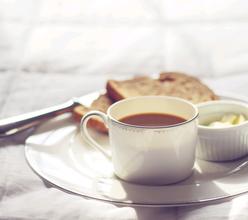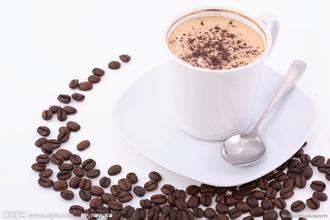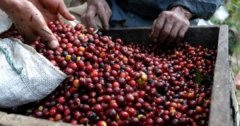Coffee beans are washed and dried, flat beans and round beans
Small and round dark brown coffee beans, quietly emitting a fragrant fragrance in the grinder, injected into the cup showing the beautiful color of amber, these are the three very deep impressions of coffee.
As you explore the history and beauty of coffee, you can also see the coffee trees that are caressed by the tropical sun and whose leaves twinkle. It has a small white flower similar to jasmine, its fruit from green to yellow-green, and finally to red, coffee beans are the seeds in its fruit.
Moreover, if you go to the coffee bean refinery, you will surely see the red pulp called coffee cherry and the fresh and green coffee raw beans with the endocarp and silver skin removed. These are the coffee beans for export.
At present, there are about 60 coffee-producing countries, most of which are located in areas with an elevation of 300 to 400 meters, and sometimes coffee trees are cultivated on highlands with elevations of 2000 to 2500 meters, but those planted on slopes above 1500 meters above sea level are said to be of better quality.
The most suitable conditions for the cultivation of coffee trees are areas with an average annual rainfall of 1500-2000 mm and an average temperature of about 20 degrees.
Coffee is an evergreen plant of the Akanaceae family. If it is wild, it can even grow to more than eight meters. However, in the farm, the height is cut to about two meters to ensure the quality of coffee beans and facilitate management.
At present, the main tree species planted are Arabica species, Robusta species (Carneva species) and Liberika species. It can be subdivided into dozens of varieties, which will be distinguished in production, circulation and trading.
Even in the same producing country, it will have a subtle influence on the flavor and quality of coffee beans and produce their own characteristics because of the differences in climate, altitude and soil quality in different regions. Therefore, according to the variety, origin, brand, there will be different attributes; therefore, it is impossible to describe the characteristics of a country's coffee beans in one sentence!
Coffee beans-specifications
Coffee beans
Washed coffee beans
a. Washing / non-washing
Washing type: in the sink, after rubbing with water and utensils, the pulp and colloid are removed and dried, which is called washing coffee bean with uniform quality.
Non-washing type: after the sun is naturally dried, the pulp and peel is removed by a sheller, and its quality is unstable.
b. Flat beans / round beans
The fruit of coffee consists of two oval seeds opposite each other. The connecting side of each other is a flat joint, which is called flat bean. But there is also a round seed called a round bean, which tastes no different. Ripe and red coffee cherries have multiple structures. In the middle is the predecessor of the coffee bean, the light green seed.
Generally speaking, the fruit of coffee is made up of two oval seeds opposite each other. The side that connects with each other is a flat joint, so it is called flat bean. But some are made up of a round seed, and its taste is no different.

Important Notice :
前街咖啡 FrontStreet Coffee has moved to new addredd:
FrontStreet Coffee Address: 315,Donghua East Road,GuangZhou
Tel:020 38364473
- Prev

Kinds of coffee, all kinds of coffee beans.
Let's talk about the types of coffee: there are four kinds of coffee trees in the world, but the coffee we drink now is mainly the fruit of two kinds of coffee trees, one is Arabica, the other is Robasta. Coffee trees in Arabica are not easy to grow, many are on high-altitude slopes, and picking needs to be done manually. But it is better to have a balanced taste and less caffeine.
- Next

Kenya Qidun Lulu Cooperative
Fine coffee beans are refined by water treatment. Washing refining method can get coffee beans with less impurities, but if the water quality and time of washing beans are not properly controlled during fermentation, it will easily cause coffee beans to be infected with excessive fermentation sour, and dry processing beans also need to pay attention to timely inspection and prevent coffee beans from being contaminated by wet ground and impurities. the processed
Related
- Does Rose Summer choose Blue, Green or Red? Detailed explanation of Rose Summer Coffee plots and Classification in Panamanian Jade Manor
- What is the difference between the origin, producing area, processing plant, cooperative and manor of coffee beans?
- How fine does the espresso powder fit? how to grind the espresso?
- Sca coffee roasting degree color card coffee roasting degree 8 roasting color values what do you mean?
- The practice of lattes: how to make lattes at home
- Introduction to Indonesian Fine Coffee beans-- Java Coffee producing area of Indonesian Arabica Coffee
- How much will the flavor of light and medium roasted rose summer be expressed? What baking level is rose summer suitable for?
- Introduction to the characteristics of washing, sun-drying or wet-planing coffee commonly used in Mantenin, Indonesia
- Price characteristics of Arabica Coffee Bean Starbucks introduction to Manning Coffee Bean Taste producing area Variety Manor
- What is the authentic Yega flavor? What are the flavor characteristics of the really excellent Yejasuffi coffee beans?

